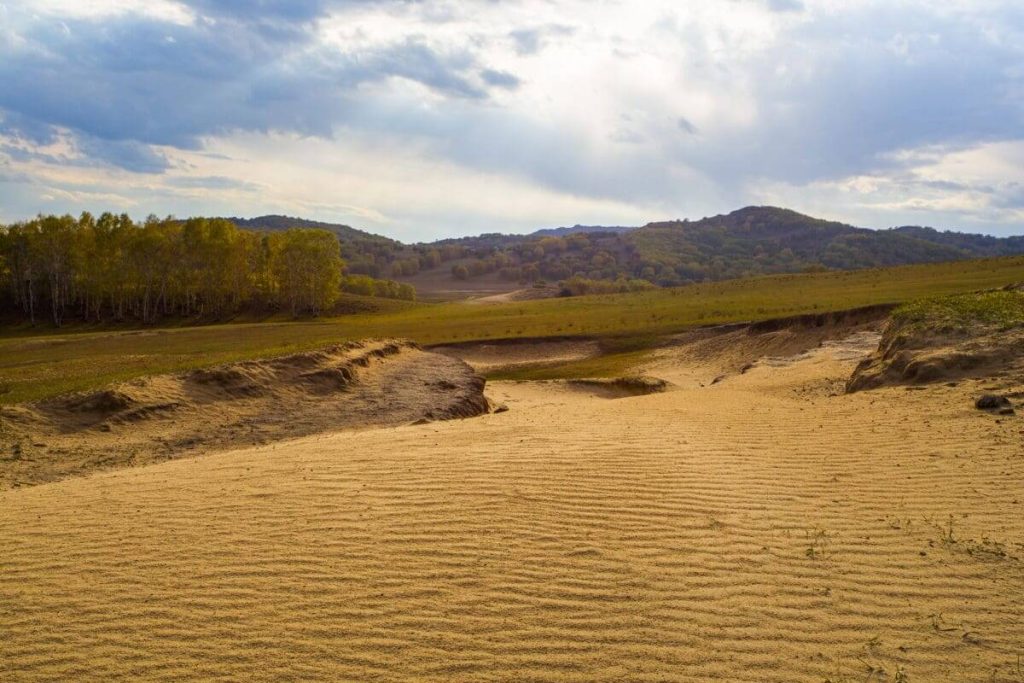
The impacts of climate change have become increasingly evident, particularly in vulnerable communities around the world. Storms are growing more potent and frequent. Wildfires are burning out of control due to high winds and excessive droughts. The damage feels amplified — and the time to take action is now before it becomes irreversible.
Interested in climate change research or furthering your knowledge on pressing issues? Explore more about desertification, what causes desertification, and what solutions to desertification will be most effective.
The Definition of Desertification
According to the United Nations (UN), the definition of desertification is commonly confused with the advancement or expansion of deserts. However, the process of desertification is not natural. It is defined as an environmental phenomenon in which dryland ecosystems are persistently degraded, due in large part to climate change and human activity.
Desertification is a global phenomenon, but it is impacting specific regions of the world more profoundly than others. Asia and Africa, for example, are experiencing the extreme consequences of desertification. According to National Geographic, desertification is taking place in more than 100 countries worldwide, and it afflicts poor and vulnerable populations more than others.
Causes of Desertification
Dryland is an environmental term that refers to arid or semi-arid areas, and according to the UN, more than 40% of the earth’s land surface is categorized as drylands. Due to persistent and consistent desertification, these land surfaces are degrading at a rapid pace, making it difficult for vulnerable communities to farm and feed themselves.
Some of the leading causes of desertification include:
Unsustainable Land Management Practices
The reality is that desertification is a direct result of human activity. Unsustainable land management practices are considered core causes of desertification globally. Over-farming — primarily performed by large corporations looking to increase their output and profits at the expense of the environment — has been a significant contributor to desertification because it has depleted the soil of its natural nutrients and eroded the topsoil. Additionally, these unsustainable farming practices have destroyed the aquifers that exist beneath the surface, preventing regrowth and rejuvenation of the local landscape.
Climate Changes
Human activity in the aftermath of the Industrial Revolution has led to climate changes that are influencing environments around the world. Such changes, like extended droughts and rising surface temperatures, have increased evaporation rates in the drylands and expedited the degradation of these surface areas.
Land/Soil Degradation
The impact of climate change coupled with human activity in the drylands has expedited land and soil degradation. Unsustainable farming practices in these regions have stripped the soil of its nutrients. Overgrazing by animals has prevented natural grass from being able to grow and thrive in the drylands. Aquifers have been destroyed, too, preventing the soil from being able to retain water. When the degradation becomes too severe, it is not possible to farm in these areas, and the land becomes almost uninhabitable.
Consequences of Desertification
The consequences of desertification are considerable, and it’s becoming clear that it’s impossible to deny the impact of this phenomenon on communities. According to Earth.org, some of the most notable consequences of desertification include:
Food Insecurity
Land degradation is more likely to affect vulnerable communities across the globe, especially those that rely on local farming for food. Food insecurity is one of the most far-reaching consequences of desertification, leaving the poorest populations without the ability to provide for themselves.
Loss of Biodiversity
The process of desertification degrades the soil so significantly that it makes it difficult for plants and animals to thrive. In the regions where desertification is occurring at a staggering rate, there has been a substantial loss of biodiversity, which can have a detrimental impact on the entire ecosystem.
Forced Climate Migrations
According to the Migration Policy Institute, forced climate migration is defined as the displacement of people due to environmental changes. For example, in 2022, more than one million people in Somalia were forced to relocate due to an ongoing, devastating drought. From natural disasters like hurricanes or tornadoes to the ongoing phenomenon of desertification, climate change is requiring people to rethink where they live, farm, and work. Sadly, forced climate migrations will become more common, particularly as desertification progresses at an alarming rate.
Possible Solutions to Desertification
While desertification is largely classified as one of the most consequential and challenging environmental issues today, there exist solutions to desertification that can be implemented to help slow the degradation of drylands. Possible solutions to desertification range from simple actions people can take in their own daily lives to collaborative efforts that inspire change on a larger scale.
Actions that Individuals Can Take
Desertification may feel like an overwhelming issue to tackle, but even individuals can make choices that could have a lasting impact on the environment. We may begin to take action simply by learning more about what desertification is and what causes it in the world today. Other individual actions to consider include:
- Starting your own permaculture garden in your home.
- Choosing to purchase food that has been grown using regenerative agriculture practices.
- Trying to reduce the amount of meat you consume on a regular basis.
Collaborative Group Efforts
Farmers and ranchers can engage in collaborative group efforts that help slow the desertification process. Such efforts might include:
- Implementing regenerative farming practices that can improve degraded land.
- Funding and promoting research that will help address the consequences of desertification.
- Investing in technology that can issue warnings when drought or desertification is occurring.
Organizational Changes that Address Desertification
Companies around the world can address desertification by investing heavily in regenerative farming practices that minimize soil erosion and restore the quality of soil in dryland areas. Now is the best time for companies to begin actively looking at their processes and developing sustainable procedures that prioritize local food production, protect wildlife, and acknowledge indigenous populations in the areas where the company operates.
What Causes Desertification? Learn More at Unity Environmental University
Desertification is considered one of the most complex and pressing environmental challenges of the modern era. The consequences of desertification are severe, and the solutions are not straightforward to implement. Those interested in pursuing an impactful and rewarding career in environmental conservation should consider a targeted degree program.
At Unity Environmental University, we offer robust and supportive online learning degree programs, including a Master of Professional Science in Climate Change Adaptation and Resilience. This innovative graduate degree program equips students with an advanced knowledge and understanding of the effects of climate change as well as the solutions that will address the leading environmental challenges of today. It is ideal for anyone striving to pursue a career in climate change research. Ready to get started? Request more information about our environmental degree programs today!



